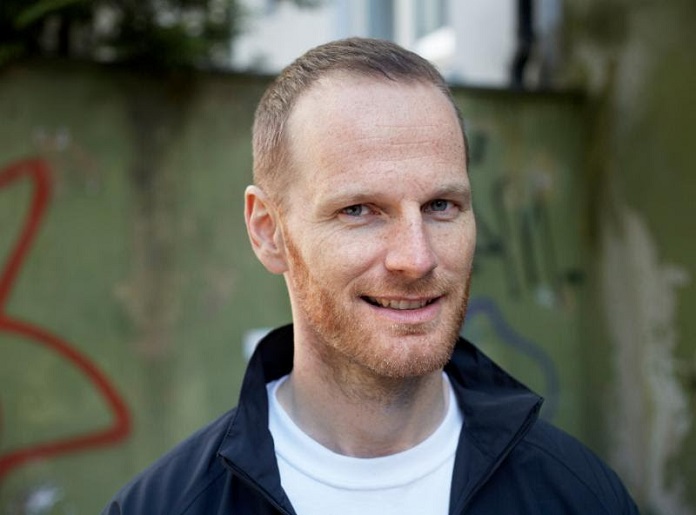
Joachim Trier, director of “Thelma”
The Norwegian filmmaker on imagery, nature, and returning home to make his new film, Thelma.
Nov 28, 2017
Joachim Trier
![]()
“A good film should be like a stone in your shoe, it shouldn’t leave you immediately,” says director Joachim Trier about his newest film, Thelma.
Born in Denmark and raised in Oslo, Trier made his English-language debut with 2015’s Louder than Bombs, an unconventional family drama starring Jesse Eisenberg, Isabelle Huppert, and Gabriel Byrne. Prior to that, he found acclaim with humanist indies Oslo, August 31, and Reprise.
Thelma follows a young woman of the title (Eili Harboe) as she leaves home in rural Norway for university in Oslo. An introvert, or at least not socially adept, Thelma longs for friendship and companionship. Soon, as she meets people, her inner ideals clash with the world she’s becoming more attached to. Raised by a strict, religious family, the lure of excess becomes problematic as undiscovered parts of her psyche and sexuality awaken, manifesting in a supernatural fashion.
“We’ve been trying with this one to deal with imagery of a more subconscious level, somehow,” Trier said about the creative process and his collaboration with longtime writing partner Eskil Vogt. “We tried to deal with anxiety of a nightmarish nature, things that have to do with anxiety of the body and the worry that if we really were ourselves, or really knew what our true will deep down inside would express that it could be a dangerous and complicated thing.”
The horror is mostly of a psychological nature. Strange things start happening to Thelma, and she has to come to grips with what her (formerly) subconscious desires might be, especially when they conflict with her intellectual ones.
Trier perhaps could have continued the trajectory into Hollywood, but returned to Norway for Thelma. The story, in his mind, demanded it.
“For me, I know how to tell this story in Norway…and to use those specific elements. Someone in America could have done the same thing, I’m sure, but for me, this one needs to be done back home.”
Among the many influences he cites, including the likes of Dario Argento, Carl Th. Dreyer, Ingmar Bergman, Stephen King, and Japanese manga, Norwegian folk tales speak just as loudly.
“The film deals with a lot of nature mythology – I grew up on Tarkovsky as well, but also Norwegian fairy tales. The idea of the serpents, the woods, the birds – these things that were considered a part of the occult that were stigmatized from a sort of Protestant – good Christianity.
There’s always been this subculture of the fairy tale and Norse myths and the wild, nature, as something that is a deep part of ourselves.”
In addition to the exploration of sexual awakening, Thelma looks at the relationship between cities and the wilderness. Despite being set primarily among the cityscape architecture of Oslo, Thelma’s past away from civilization is always bubbling below the surface. It’s done with subtlety and quiet.
Thelma is also a departure, even if Trier and Vogt’s script continues to consider what it’s like to feel isolated and alone in a crowd like in previous films, because he’s painting with a genre brush.
“It’s almost like we come from the woods and go to the city, and then go back to the woods. I haven’t done a movie with fire and ice, and I haven’t had real life serpents on set, and I haven’t had actors have to learn to be underwater for a minute at a time to pull off the shot I needed. It’s a weird mixture of my stunt past as a skateboarder and an eagerness to make specific images.”
Visuals carry the film. With an expressive actress in Harboe at the forefront, Trier relies on her face and body language to push the narrative instead of dialog for exposition. He supposes it features less dialog than any of his previous films.
The striking imagery, particularly in the icy climax, serves as a reminder that Thelma is working within the horror genre in addition to being an intimate character study, and Trier wants to embrace the genre’s trappings while also pushing it forward.
“There’s this kind of tradition of using this kind of genre, not only to show beautiful women running around screaming in their underwear but to show something more empowering. And I care about Thelma’s character. I can identify with the need to try to figure out who you really are regardless of the expectations put on you.”
Current Issue

Issue #72
Apr 19, 2024 Issue #72 - The ‘90s Issue with The Cardigans and Thurston Moore
Most Recent
- Premiere: Slow Joy Releases New Single and Video for “King Cowboy” (News) —
- Hovvdy (Review) —
- Descendents, Circle Jerks @ Brooklyn Paramount, NYC, April 13, 2024 (Review) —
- Bat For Lashes Shares a Cover of Baauer’s “Home” From Her New Album (News) —
- Premiere: Veronica Lewis Shares New Single “Disconnected” (News) —

Comments
Submit your comment
There are no comments for this entry yet.